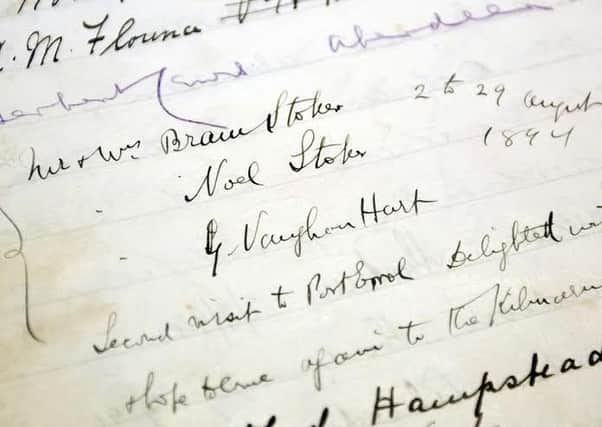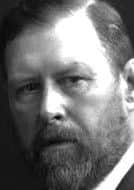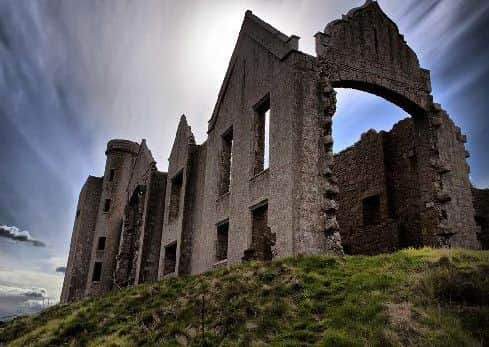Bram Stoker’s Aberdeenshire inspiration for Dracula


It is slightly yellowed with age but the entry in an old guest book of an Aberdeenshire hotel forges an indelible link between this unforgiving stretch of coastline to arguably the world’s greatest horror story.
“Delighted with everything and everybody and hope to come again,” goes the entry, And it is signed Bram Stoker, the creator of Dracula.
Advertisement
Hide AdStoker stayed at the Kilmarnock Arms Hotel in Cruden Bay for most of August 1894 with his wife and son Noel.


Shortly afterwards he wrote The Mystery of the Sea - about a visitor to the village draw into a supernatural mystery - with his Gothic vampire tale published three years later.
There is a strong belief amongst some that it was was Slains Castle near Cruden Bay - a clifftop brute of a building - that paved the way for Dracula’s creation.
Whitby in North Yorkshire has long traded well on its association with Dracula, given that the vampire landed there on his arrival in England as the story unfolds.
But there is also the view that it was Slains that embedded itself in his imagination as the home of his creation.


Professor Alan Riach, expert in scottish literature at Glasgow University said: “Stoker spent summers at Cruden Bay and set some of his fiction there, at least one novel and stories, and with Dracula, I think Slains Castle certainly informed his imagination.
Advertisement
Hide Ad“There is a curious chapter in Dracula where the local fishermen of what purports to be Whitby are speaking in the vernacular, but the language they’re using is Scots, not a dialect of English at all.
“So I think Stoker was very sensitive to the Scots sounds and ethos he experienced.”
Advertisement
Hide AdProf Riach visited Slains Castle in the 1990s and was taken by the sensation it created.
He said: “It was not at that time noted particularly as ‘Dracula’s Castle’ but when I wandered around its ruins, there was a very particular feeling that I haven’t experienced elsewhere, partly I think to do with the architectural design: it was the feeling that, as you could see down ruined corridors, past broken arches, with other passageways crossing into your point of view, there was an eerie sense that someone was just around the corner, at any moment about to step into view, leaning over your shoulder or on the point of appearing just on the edge of your vision. A haunted feeling indeed.”
In Dracula, Stoker describes: “…a vast ruined castle, from whose tall black windows came no ray of light, and whose broken battlements showed a jagged line against the moonlit sky”.
And as the character of Dracula starts to emerge, he goes on “...I saw the whole man slowly emerge from the window and began to crawl down the castle wall over that dreadful abyss, face down, with his clock spreading around him like great wings...”
Lucy Taylor, owner of the Kilmarnock Arms Hotel, said that the Stoker’s links to the area were of ongoing interest and that the visitor’s book was often pulled out for the curious.
It is also said the writer stayed at Ecclesgreig Castle in St Cyrus, a Victorian Gothic pile said to have inspired Dracula, on his time in the North East but this seems to a claim undocumented in fact.
Slains Castle has long been earmarked for development as holiday apartments but the final proposals have yet to materialise.